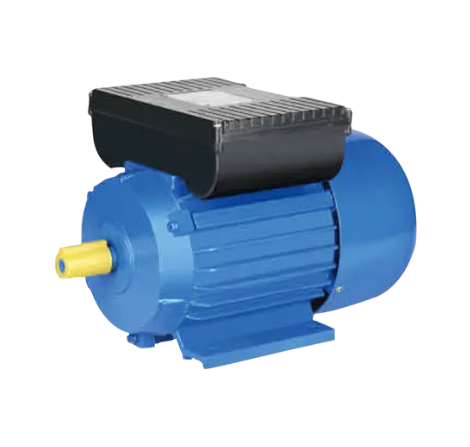Successful installation of a single-phase dual-capacitor induction motor begins with selecting the correct mounting style—NEMA 56 frame, 56H, or 145T—based on the driven equipment’s footprint. Secure the motor on a rigid base using vibration-damping pads to prevent frame distortion and bearing misalignment. Next, verify supply voltage matches the nameplate rating; 115/230 V motors should be reconnected in the terminal box according to the wiring diagram provided on the inside of the cover. Route conductors through a liquid-tight conduit to protect against moisture and mechanical damage, and install a dedicated disconnect switch within sight of the operator. Select wire gauge based on full-load current plus 25 % to limit voltage drop to less than 3 %. After wiring, spin the shaft by hand to ensure free rotation; any rubbing indicates bearing or end-bell misalignment. Attach the load with a flexible coupling or V-belt; tension belts to manufacturer specifications to avoid overhung loads that prematurely fatigue bearings. Capacitors must be mounted in well-ventilated enclosures, away from radiant heat sources such as compressors or furnaces. Use only motor-run oil capacitors rated 370 VAC or 440 VAC for continuous duty; replace start electrolytics every five years or 20,000 cycles. Finally, perform a no-load test: energize briefly and observe rotation direction; if reversed, interchange T5 and T8 leads. Record starting current, no-load current, and vibration levels to establish baseline data for future predictive maintenance. Label the control panel with capacitor values, wiring diagram, and recommended spare parts list to streamline future service calls.
Search
Categories
- Politics
- Home
- Wellness
- Theater
- Sports
- Shopping
- Religion
- Party
- Other
- Networking
- Music
- Literature
- Art
- Health
- Gardening
- Games
- Food
- Fitness
- Film
- Drinks
- Dance
- Crafts
- Causes
Read More
Extracorporeal Membrane Oxygenation Market Report Unlocking Growth Potential and Addressing Challenges
United States of America – The Insight Partners is pleased to introduce its most recent...
The Patents Behind GTA 6 Are Actually Pretty Wild – Here’s Why They Matter
As anticipation builds for Grand Theft Auto VI (GTA 6), fans are poring over every scrap of...
Laser Scanning Diameter Market Key Trends And Forecast Report 2024-2033
Laser Scanning Diameter Market Overview
The Laser Scanning Diameter Market is...
Casino Together : Une Expérience de Jeu Sociale et Innovante
Casino Together propose une approche unique du casino en ligne, où le plaisir du jeu se...
Tris (Hydroxymethyl) Aminoethane Market Industry Current Trends, Opportunities and Challenges by 2033
Tris (Hydroxymethyl) Aminoethane Market
OverviewTris (hydroxymethyl) aminoethane, commonly known...


